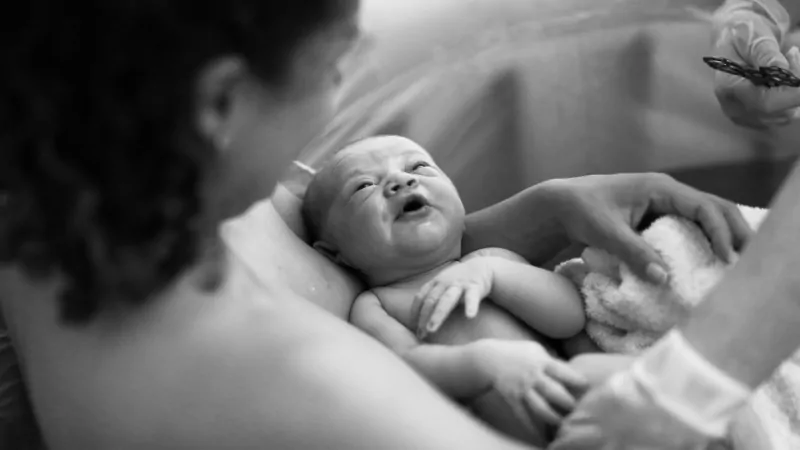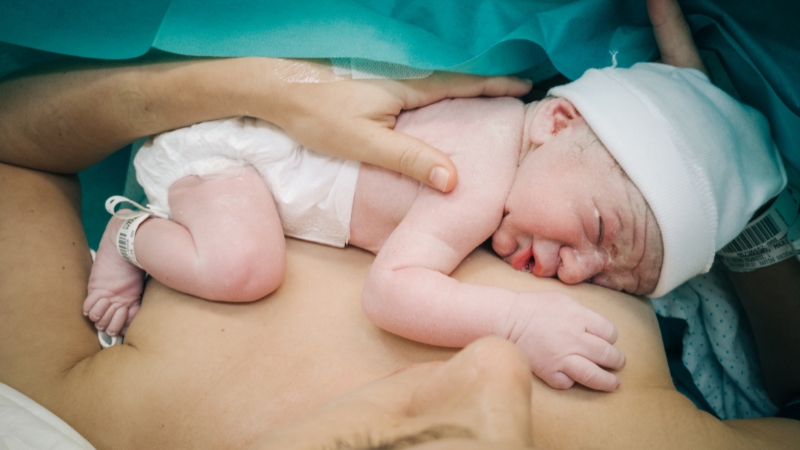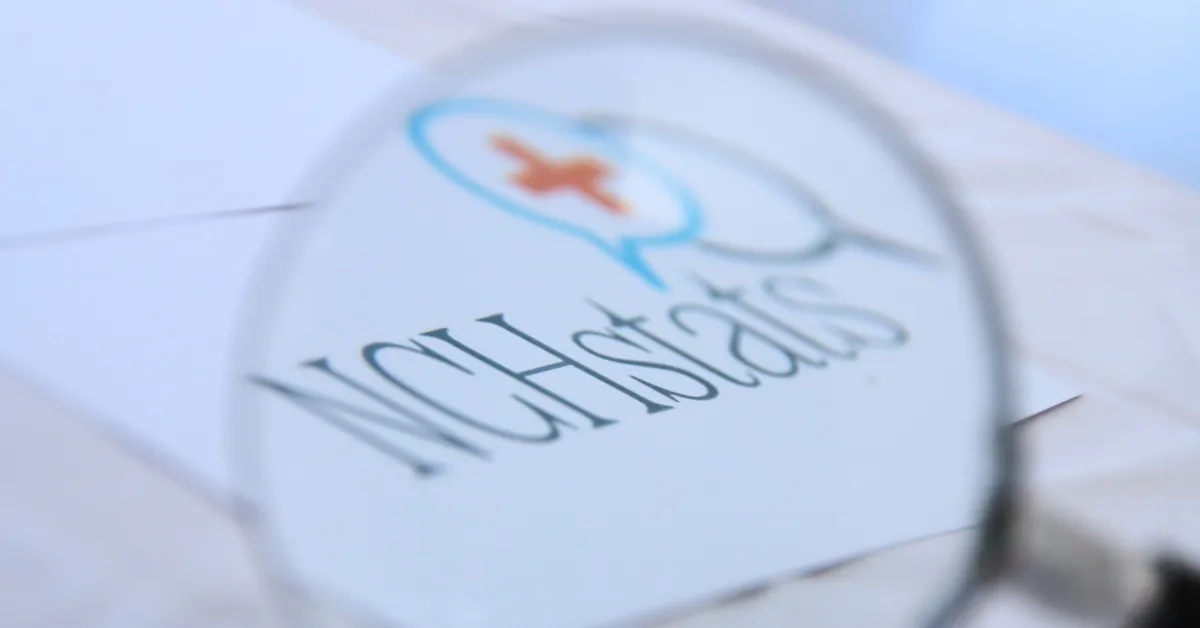https://www.cdc.gov/nchs/state-stats/births/teen-births.htmlBirth rates among teens have dropped sharply over the past few decades, reflecting shifting cultural norms, better access to contraception, and a growing awareness of the challenges that come with early parenthood.
But there’s still a lot of variation between states, with some leading the charge and others lagging.
In 2022, the U.S. recorded 143,789 births to teens aged 15–19, marking a 2% drop from the previous year, according to the CDC. That brings the national teen birth rate down to 13.6 per 1,000 females aged 15–19, a record low.
But a closer look reveals big differences in how each state is tackling the issue — and who’s making the biggest strides.
Key Takeaways
- The U.S. teen birth rate reached a record low of 13.6 per 1,000 in 2022, a 2% decrease from 2021 and a 67% decline since 2007.
- States like Mississippi (26.4) and Arkansas (24.6) show persistently high rates, while New Hampshire (4.6) and Massachusetts (5.8) demonstrate major progress.
- Teen birth rates fell by 7% for Black and American Indian/Alaska Native teens, but rose 1% for Hispanic teens, showing uneven trends.
- First-trimester prenatal care dropped to 59.1% while late/no care rose to 10.8%, pointing to healthcare access gaps.
- Medicaid covered 78.9% of teen births, indicating the economic challenges many teen mothers face.
- Smoking during pregnancy dropped to 3.7%, but remains a health concern among teen mothers.
Where Teen Birth Rates Are Dropping Fast

Across the board, teen birth rates in the U.S. have been falling. Since 2007, the national rate has plummeted 67%. Compare that to the early ’90s, and you’ll see a whopping 78% decline from its peak.
In 2022, the biggest declines in teen birth rates were seen in 13 states, including:
- Oklahoma, with a 12% drop in teen births.
- Florida, where rates fell by 3%.
- States like Connecticut, Nevada, and Pennsylvania also saw noticeable declines.
On a national scale, the data suggests that policies promoting education and reproductive health access are starting to make a difference, but only in certain pockets of the country.
Teen Birth Rates by State (per 1,000 females aged 15–19)
| State | Rate |
| Alabama | 20.9 |
| Alaska | 16.9 |
| Arizona | 15.1 |
| Arkansas | 24.6 |
| California | 9.8 |
| Colorado | 11.1 |
| Connecticut | 6.4 |
| Delaware | 14.7 |
| District of Columbia | 12.5 |
| Florida | 13.1 |
| Georgia | 16.6 |
| Hawaii | 11.7 |
| Idaho | 10.9 |
| Illinois | 11.3 |
| Indiana | 16.7 |
| Iowa | 12.4 |
| Kansas | 16.2 |
| Kentucky | 21.8 |
| Louisiana | 23.7 |
| Maine | 8.4 |
| Maryland | 10.9 |
| Massachusetts | 5.8 |
| Michigan | 11.6 |
| Minnesota | 8.2 |
| Mississippi | 26.4 |
| Missouri | 16.9 |
| Montana | 12.2 |
| Nebraska | 14.1 |
| Nevada | 14.0 |
| New Hampshire | 4.6 |
| New Jersey | 8.2 |
| New Mexico | 19.7 |
| New York | 8.6 |
| North Carolina | 15.0 |
| North Dakota | 11.7 |
| Ohio | 15.4 |
| Oklahoma | 21.2 |
| Oregon | 10.1 |
| Pennsylvania | 10.6 |
| Rhode Island | 8.3 |
| South Carolina | 17.3 |
| South Dakota | 17.4 |
| Tennessee | 21.0 |
| Texas | 20.4 |
| Utah | 9.0 |
| Vermont | 5.8 |
| Virginia | 11.2 |
| Washington | 9.6 |
| West Virginia | 19.8 |
| Wisconsin | 9.8 |
| Wyoming | 16.0 |
The data shows a stark contrast between states with low and high teen birth rates. States like Mississippi (26.4), Arkansas (24.6), and Louisiana (23.7) have rates more than five times higher than those in New Hampshire (4.6) or Massachusetts and Vermont (5.8).
This suggests a persistent regional divide, with the highest rates concentrated in parts of the South and Midwest. Factors driving these differences likely include variations in access to comprehensive sex education, availability of reproductive health services, and socioeconomic conditions.
Several states in the West and Northeast — including California (9.8), New Jersey (8.2), and Maine (8.4) — also report relatively low teen birth rates. These areas tend to have stronger public health infrastructure and more progressive policies around family planning and sex education, which likely contribute to the lower figures.
In contrast, states like Oklahoma (21.2) and Kentucky (21.8), despite some improvements, still exhibit higher rates that indicate room for significant policy and education-based interventions.
Teen Birth Rate Declines by Age Group (U.S., 2022)
| Age Group | Birth Rate per 1,000 (2022) | Change from 2021 | Decline Since 2007 | Decline Since 1991 |
| 15–19 | 13.6 | -2% | -67% | -78% |
| 15–17 | 5.6 | 0% | -74% | -85% |
| 18–19 | 25.8 | -3% | -64% | -73% |
| 10–14 | 0.2 | 0% | — | — |
According to the latest data from the CDC, the teen birth rate in the U.S. fell to a record low of 13.6 births per 1,000 females aged 15–19 in 2022, marking a 2% drop from the previous year. This continued decline extends a steady trend observed since 2007, with the rate plummeting by 67% from its level of 41.5 per 1,000 that year.
When compared to 1991, when the rate peaked at 61.8, the reduction is an even more dramatic 78%, underscoring decades of progress in reducing teen pregnancies.
Breaking the data down by age group reveals nuanced shifts.
For younger teens aged 15–17, the rate held steady at 5.6 per 1,000, matching 2021 levels but representing a 74% drop since 2007 and an 85% reduction since 1991. The lack of a decrease from 2021 suggests that while long-term improvements are clear, recent progress has plateaued for this group.
Meanwhile, the birth rate for older teens aged 18–19 saw a 3% decrease from 2021, falling to 25.8 per 1,000. This represents a 64% decline since 2007 and a 73% drop since 1991, showing that reductions continue but at a slower pace for this slightly older cohort.
Racial and Ethnic Variations
| Group | Change in Birth Rate |
| Black teens | -7% |
| American Indian and Alaska Native teens | -7% |
| White teens | -3% |
| Hispanic teens | +1% |
| Asian and Native Hawaiian/Pacific Islander teens | No significant change |
According to the 2022 data from NCBI, the decline in teen birth rates wasn’t uniform across racial and ethnic groups. Black teens and American Indian/Alaska Native teens both saw a 7% drop in birth rates, suggesting improvements in outreach and access to reproductive healthcare for these populations.
However, the 1% increase among Hispanic teens is a deviation from the national downward trend, indicating a need for targeted interventions and education in certain communities.
Meanwhile, rates for Asian and Native Hawaiian/Pacific Islander teens showed no significant change, which, while stable, indicates room for improvement in reducing teen pregnancies within these groups.
Teen Nonmarital Birth Rates (2021–2022)
| Group | Birth Rate (per 1,000) | Change from 2021 |
| Overall | 12.7 | -2% |
| Ages 15–17 | 5.6 | No change |
| Ages 18–19 | 23.6 | -3% |
The overall nonmarital birth rate for teens fell to 12.7 per 1,000, a 2% drop from 2021. For teens aged 18–19, the rate decreased by 3%, reaching 23.6 per 1,000, while for the younger 15–17 age group, the rate remained unchanged at 5.6.

These figures underscore ongoing disparities based on age, with older teens continuing to account for a larger share of nonmarital births. The decline suggests incremental progress in reducing unintended pregnancies, but the persistent rate among younger teens points to areas where prevention and support programs could be reinforced.
Health Behaviors and Support for Teen Mothers (2021–2022)
| Category | 2021 | 2022 |
| First-trimester prenatal care | 61.6% | 59.1% |
| Late/no prenatal care | 9.9% | 10.8% |
| Smoking during pregnancy | — | 3.7% |
| Medicaid coverage for births | 78.8% | 78.9% |
| Private insurance coverage | — | 14.7% |
Health support for teen mothers remains an area of concern. First-trimester prenatal care declined from 61.6% to 59.1%, while late or no prenatal care rose from 9.9% to 10.8%, signaling potential barriers to early intervention and healthcare access.
Smoking during pregnancy was reported by 3.7% of teen mothers, highlighting the need for targeted education and support to mitigate risks for both mother and child, as noted by AHA Journals.
Medicaid continues to cover the majority of teen births (78.9%), underscoring the financial vulnerability of many young mothers. The low rate of private insurance coverage (14.7%) further emphasizes the reliance on public assistance programs within this demographic.
Prenatal Care and Health for Teen Moms
@teenmom Replying to @user3219390596465 As her due date approaches, Jenelle has a baby shower and prepares for giving birth 🤰 #teenmom #16andpregnant #jenelleevans ♬ original sound – Teen Mom
Teen pregnancy isn’t just about the numbers — it’s also about the health of young moms and their babies.
In 2022, only 59.1% of pregnant teens started prenatal care in the first trimester, down from 61.6% in 2021. Late or no prenatal care jumped from 9.9% to 10.8% according to PubMed.
There’s a clear connection here: areas with better healthcare access and outreach tend to have lower teen birth rates. Where support is lacking, young mothers may face higher risks, both for themselves and their babies.
Who Pays for Teen Births?
A closer look at healthcare costs reveals that Medicaid covered 78.9% of births to teen mothers in 2022, slightly higher than the previous year.
Private insurance covered just 14.7%, reflecting the economic challenges many teen mothers face.
Smoking During Pregnancy – A Declining Trend
One positive sign? Smoking during pregnancy among teens continues to drop. In 2022, only 3.7% of pregnant teens reported smoking at any point.
While that’s lower than in older age groups, it’s still a concern — and a reminder that health education for young people matters.
The Big Picture
The U.S. has made undeniable progress in reducing teen births, but the map is far from even.
States like New Hampshire, Massachusetts, and New Jersey show what’s possible with strong education and healthcare support.
Others, like Mississippi, Arkansas, and Louisiana, highlight areas where work remains.
It’s a patchwork of progress, setbacks, and opportunities. Moving forward, the key is clear: expanding access to comprehensive sex education, healthcare, and support systems can keep driving these numbers down — and help every young person start their future on solid ground.
Methodology
- Analyzed 2022 CDC and NCHS data to extract national and state-level teen birth rates.
- Reviewed racial/ethnic trends and age-group breakdowns for nuanced insights.
- Compared figures against historical benchmarks from 1991 and 2007 for long-term context.
- Summarized key healthcare indicators, including prenatal care and insurance coverage.
- Organized data into clear tables and extracted high-level trends and disparities.
- Maintained a natural, journalistic tone while grounding content in verified statistics.
References
- Centers for Disease Control and Prevention (CDC) –
Teen Birth Rate Trends in the United States, 2022 - Centers for Disease Control and Prevention (CDC) –
Teen Birth Rates by State, 2022 - National Center for Biotechnology Information (NCBI) –
Teen Pregnancy in the United States – A Review - American Heart Association Journals –
Maternal Smoking During Pregnancy
Related Posts:
- Why Americans Are Falling Behind in Life Expectancy…
- What’s the Legal Difference Between a Certificate of…
- Teen Depression Statistics in the US - A Closer Look…
- How Many People Die Each Day in the US in 2025? And…
- From the Newsroom - This Week’s Work, Updates, and…
- When Birth Rates Crash, So Do House Sales - The Hidden Risk








